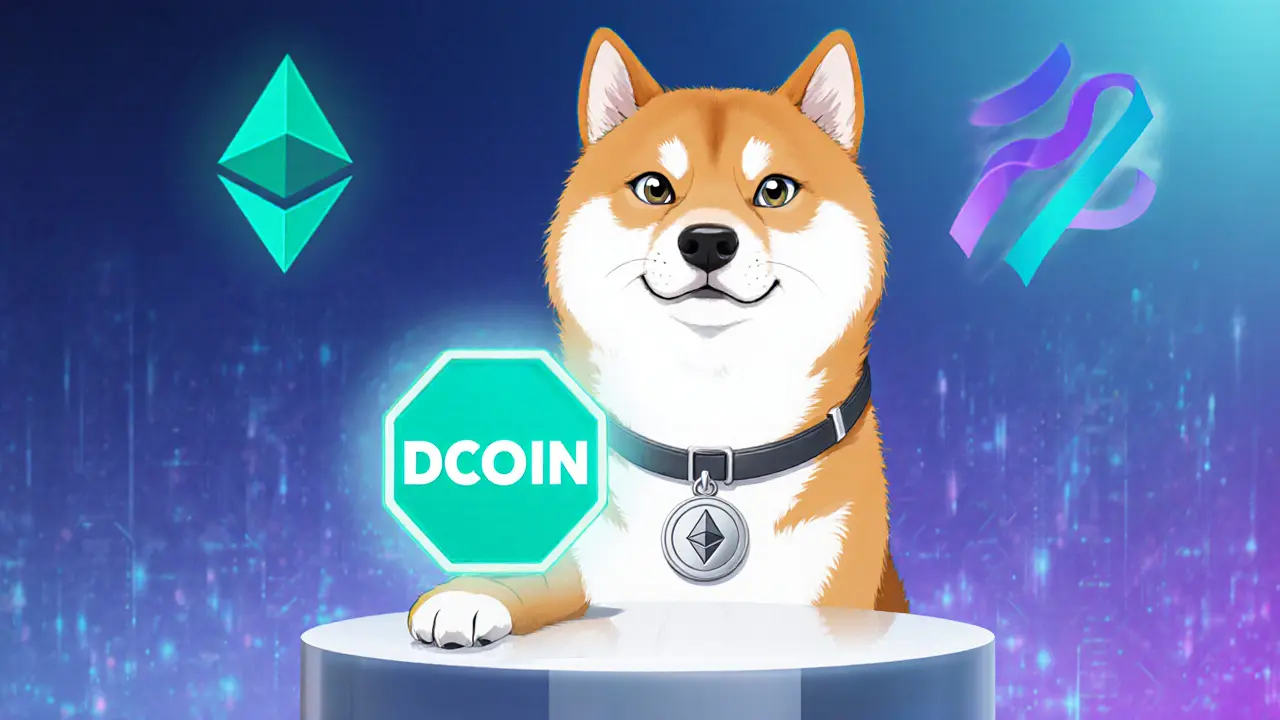DCOIN – Your Guide to the Emerging Crypto Token
When you hear about DCOIN, a newer blockchain‑based token aiming to combine fast transactions with real‑world utility, you’re looking at a project that sits at the crossroads of Crypto Airdrops, community‑driven token distributions that boost adoption, Blockchain Regulation, the evolving legal framework that shapes how tokens can operate globally, Decentralized Exchanges, platforms where DCOIN can be traded without a central intermediary and even NFTs, unique digital assets that can extend DCOIN’s ecosystem. In plain terms, DCOIN tries to be fast, flexible, and friendly for everyday users.
Key Features That Define DCOIN
DCOIN’s core promise is speed. Built on a layer‑2 solution, it processes transactions in under two seconds with fees that are a fraction of Bitcoin’s. That attribute (fast transaction finality) directly supports the token’s aim to serve micro‑payments and gaming economies. Its supply model is capped at 100 million coins, with a modest inflation schedule to fund community grants. Because of the low‑cost architecture, DCOIN can power real‑time purchases in decentralized apps without draining users’ wallets.
The token’s distribution strategy hinges on crypto airdrops. By giving away small amounts to early adopters, DCOIN seeds liquidity and creates buzz. Recent airdrop campaigns have required participants to hold a minimal DCOIN balance, follow social channels, and complete simple verification steps. This approach lowers entry barriers, encourages network effects, and aligns with the broader trend of community‑first token launches.
Regulatory compliance is another pillar. DCOIN’s team monitors global blockchain regulation, especially in regions like the EU, the UAE, and Nigeria where crypto rules are shifting fast. The token adheres to KYC/AML standards for any fiat‑on‑ramp services, and the smart contract code is open‑source for auditability. By staying ahead of blockchain regulation, DCOIN reduces the risk of sudden bans that have hit other projects.
Liquidity finds its home on decentralized exchanges. Because DCOIN is not tied to a single centralized platform, traders can swap it on multiple DEXs that support its underlying chain. This multi‑venue availability boosts price stability and protects users from exchange‑specific outages. Moreover, automated market makers (AMMs) on these DEXs supply constant liquidity, making it easy for anyone to buy or sell DCOIN at market rates.
Beyond pure finance, DCOIN is exploring NFT integration. Developers can mint NFTs that represent in‑game items, membership passes, or artwork, and tie those NFTs to DCOIN for payments or royalties. This creates a loop where NFT owners earn DCOIN for certain actions, while DCOIN holders gain exclusive access to premium NFT drops. The synergy between token and NFT expands DCOIN’s use cases beyond simple transfers.
All of these pieces—speed, airdrop outreach, regulatory foresight, DEX liquidity, and NFT utility—form a cohesive ecosystem. Below you’ll find deep dives on each topic: guides on navigating Iran’s crypto restrictions, step‑by‑step instructions for claiming airdrops, reviews of exchange platforms, and explanations of emerging token models like stablecoins and AI‑driven coins. Use the collection to sharpen your DCOIN knowledge, spot opportunities, and avoid common pitfalls as the token evolves.
- August 24, 2025
- Comments 19
- Cryptocurrency

